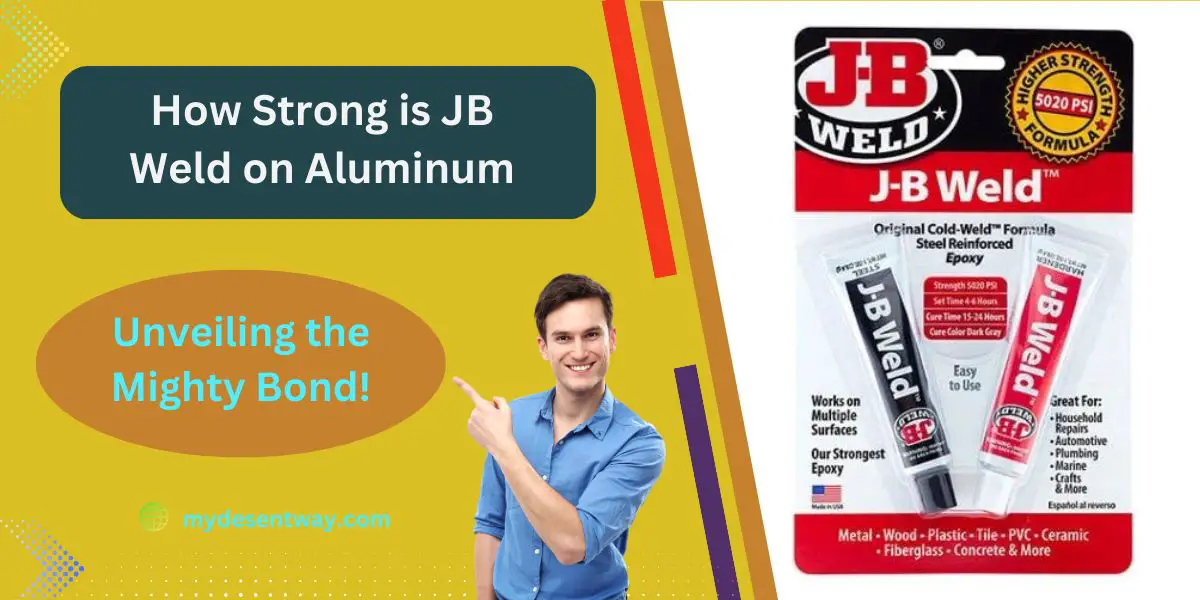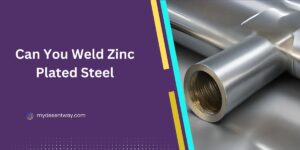Table of Contents
Hey DIY fans and weekend warriors, ever wondered how strong is JB weld on aluminum? I understand – when you’re in the middle of a project, the last thing you need is a weak link.
Well, hang tight with your power tools because we’re about to explore JB Weld and see how powerful it is on aluminum surfaces. Let’s get the real scoop and discover just how strong this awesome adhesive truly is!
The Truth About JB Weld and Aluminum
Alright, let’s begin with the basics. JB Weld is like the go-to duct tape in the world of epoxy – it’s handy, sticky, and a real hero for fixes. Now, when it comes to aluminum, we’re dealing with a lightweight but strong metal. So, here’s the big question: how well does JB Weld work on aluminum surfaces?
The Chemical Magic
The secret to JB Weld’s strength on aluminum is in its chemistry. It’s a two-part epoxy, where you mix a resin and a hardener to make the magic happen. Think of it like a powerful duo – they join forces, and voila, you’ve got a bond that’s as strong as some solid friendships
It’s a Weld, but Not Really
Before we go further, let’s get things straight: JB Weld is an epoxy, not a weld. Welding melts and fuses metals, but JB Weld works through a chemical bond. So, it’s not the hot and fiery show of a welding torch; think of it as a quiet, behind-the-scenes partnership.
A Look at How JB Weld Works with Aluminum
Now, let’s get to the juicy stuff – how does JB Weld stand up to the mighty challenge of bonding aluminum?
What Strength Really Is
- Tensile Strength Tango: JB Weld on aluminum boasts impressive tensile strength. We’re talking about the ability to withstand pulling forces. So, if you’re fixing a cracked aluminum part that’s likely to experience some tension, JB Weld is flexing its muscles.
- Shear Strength Showdown: Shear strength is crucial for parts that experience forces parallel to their surface. JB Weld doesn’t shy away here either; it’s like the bodyguard ensuring your aluminum bits stay put.
Temperatures, Anyone?
- Heat Resistance Hurdle: JB Weld on aluminum can handle a fair bit of heat, but don’t expect it to become your go-to for exhaust system repairs. For everyday fixes and projects, it’s a reliable companion even in the heat of the moment!
- Cold Snap Resilience: On the flip side, extreme cold won’t send JB Weld running for cover. It remains steadfast, making it a reliable choice for projects in chilly environments.
Flexibility: The Key to Success for JB Weld
- Flexibility Finesse: Unlike some rigid adhesives, JB Weld on aluminum has a touch of flexibility. This is a game-changer for projects that might experience vibrations or movement. Your fix won’t crack under pressure!
- Impact Resistance Rumble: Bangs, knocks, and accidental drops – JB Weld on aluminum takes them in stride. It’s like the superhero landing of adhesives, absorbing shocks and keeping your repair intact.
Tips for Applying JB Weld on Aluminum
JB Weld can work wonders when applied correctly, especially on aluminum surfaces. Follow this step-by-step guide to ensure optimal results and take note of essential dos and don’ts during the application process.
Step-by-Step Guide:
1. Surface Preparation:
Before anything else, ensure the aluminum surface is clean and free from any contaminants. Use a degreaser or rubbing alcohol to remove oil, dirt, or rust that might hinder the bonding process.
2. Abrasion for Better Adhesion:
To enhance adhesion, consider lightly abrading the aluminum surface with sandpaper. This helps create a rough texture, allowing JB Weld to grip more effectively.
3. Mixing the Epoxy:
JB Weld is a two-part epoxy, typically consisting of a resin and a hardener. Follow the instructions on the product for the correct ratio, and thoroughly mix the components until you achieve a uniform color.
4. Application with Precision:
Use a disposable tool or an old popsicle stick to apply the mixed JB Weld onto the aluminum. Ensure even coverage and don’t be afraid to use a bit more if the bonding area is irregular or porous.
5. Pressing Surfaces Together:
Once the JB Weld is applied, carefully bring the surfaces together. Apply steady pressure for the best bond. If possible, use clamps to hold the parts in place while the epoxy cures.
6. Removing Excess Epoxy:
Swiftly remove any excess epoxy before it fully cures. Acetone or nail polish remover can be handy for cleaning up, but ensure it won’t harm the aluminum.
7. Curing Time:
Allow ample time for JB Weld to cure. Follow the product instructions for the specific curing time, and avoid disturbing the bonded parts during this period.
8. Finishing Touch:
Once the JB Weld has cured, you can sand or paint over the repaired area to match the original surface. This step ensures a seamless finish.
Dos and Don’ts During Application:
Dos:
- Follow Instructions: Always adhere to the instructions provided on the JB Weld product. This includes the mixing ratio, curing time, and any specific recommendations.
- Test on Small Areas: If possible, conduct a small-scale test on a scrap piece of aluminum to ensure compatibility and familiarize yourself with the product’s behavior.
- Wear Protective Gear: Use gloves and work in a well-ventilated area to protect yourself from potential skin contact and fumes.
Don’ts:
- Overlook Surface Preparation: Skipping proper cleaning and preparation can compromise the bond. Take the time to prepare the aluminum surface adequately.
- Apply Excessive Force During Bonding: While pressure is essential for a good bond, avoid excessive force that could misalign the parts or squeeze out too much epoxy.
- Neglect Safety Precautions: JB Weld contains chemicals, so be cautious. Avoid contact with eyes or prolonged skin exposure. If in doubt, consult the product’s safety guidelines.
By following these tips and being mindful of dos and don’ts, you can maximize the effectiveness of JB Weld on aluminum, ensuring a strong and durable bond for your projects.
Conclusion: The JB Weld-Aluminum Love Affair
So, how strong is JB Weld on aluminum? In simple terms, JB Weld on aluminum is like a reliable friend in your toolbox. It’s there to handle forces, deal with extreme temperatures, and be the unsung hero for all your repairs and projects.
The next time you’re in a DIY bind, questioning if JB Weld can tackle the challenge of aluminum – don’t worry! It’s more than just adhesive; it’s a bond that lasts through time, temperature changes, and twists. So, go ahead, use it, and let JB Weld be the glue that keeps your aluminum adventures intact!
FAQs about How strong is jb weld on aluminum
Can JB Weld be Used on All Types of Aluminum?
Absolutely! JB Weld plays nice with various types of aluminum, from cast to sheet. It’s the friendly neighbor that gets along with everyone in the aluminum family.
How Long Does JB Weld Take to Cure on Aluminum?
Patience, grasshopper! JB Weld takes about 15-24 hours to cure fully. However, if you want maximum strength, give it a good 24 hours to set.
Does Surface Preparation Matter?
You betcha! Clean, sand, and degrease the aluminum surface before applying JB Weld. Think of it as giving the adhesive a clean canvas to work its magic.
Can JB Weld Handle Oil and Gas Exposure?
Yes, siree! JB Weld on aluminum can brave the oily and gassy realms. It’s like equipping your repair with a shield against corrosive elements.
Is JB Weld Waterproof on Aluminum?
Dive right in! JB Weld is water-resistant once cured, making it a great choice for projects exposed to the elements.









1 thought on “How Strong is JB Weld on Aluminum?”